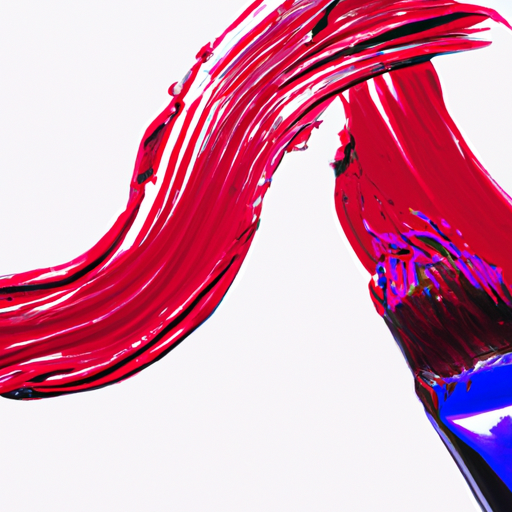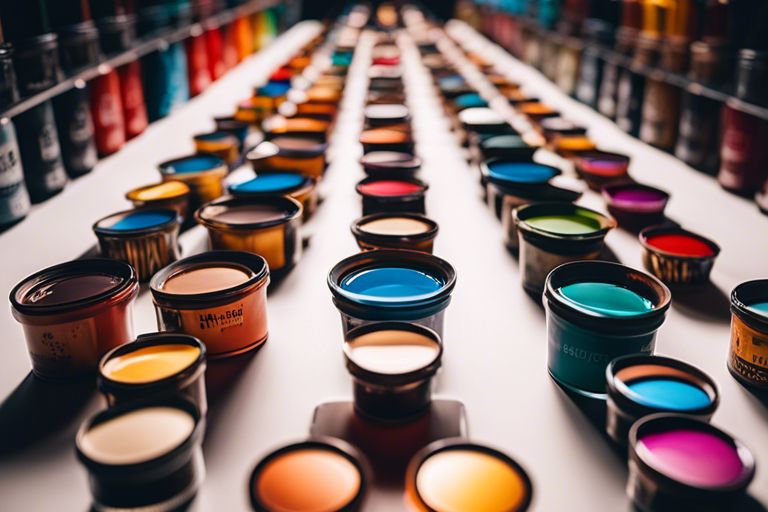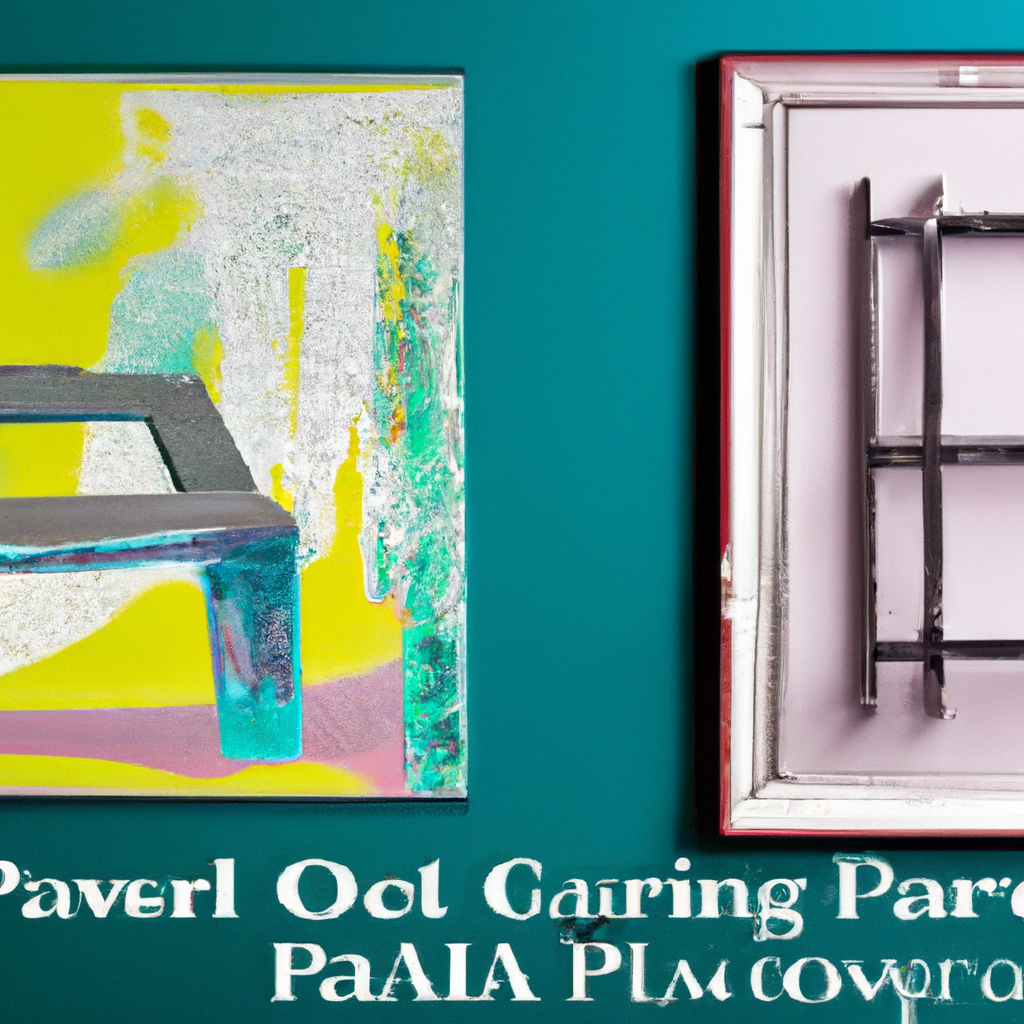In this article, you will discover a simple and easy way to create magenta with acrylic paint. With just a few basic steps, you can unlock the secret to achieving this vibrant and eye-catching color. Whether you’re an experienced artist or just starting out with acrylics, this guide will provide you with the knowledge you need to mix your own beautiful shade of magenta. So grab your paintbrush and let’s get started on this colorful journey!

Materials Needed
To make magenta with acrylic paint, you will need the following materials:
Acrylic paint in primary colors
You will need acrylic paint in the primary colors: red, blue, and yellow. These colors are essential for creating secondary colors like magenta. Make sure to choose high-quality acrylic paint for the best results.
Paint palette or mixing surface
A paint palette or a flat surface like a plastic tray or a ceramic plate is needed to mix the acrylic paint. It provides a stable surface for you to blend the colors together.
Paintbrush
You will need a paintbrush to mix the colors and apply the magenta paint to your artwork. Choose a brush size that suits your preference and the scale of your project.
Water
A container of water is necessary to clean your brushes and thin the acrylic paint if needed. Water helps to achieve a smoother consistency and makes it easier to mix the colors.
Paper or canvas for testing
To ensure you create the perfect shade of magenta, it’s essential to have paper or canvas for testing the color. This way, you can make any necessary adjustments before applying the magenta paint to your final artwork.
Understanding Magenta
Definition of magenta
Magenta is a vibrant color that falls between red and purple on the color spectrum. It is often described as a reddish-purple hue. Magenta is named after the purple-red flower, known as the Magenta plant, which was discovered in the late 1850s.
Properties of magenta
Magenta is an intense color with high saturation and brightness. It is a versatile color that can evoke various emotions depending on its context. Magenta is often associated with passion, creativity, and energy. It has a striking presence and can instantly grab attention when used in artwork.
Importance of magenta in art
Magenta plays a crucial role in the art world as a primary component of the color wheel. It serves as a bridge between warm and cool tones, providing balance and contrast in paintings. Many artists rely on magenta to create vibrant and expressive artworks. Its inclusion in a color palette expands the range of possibilities and adds depth to the overall composition.
Color Mixing Basics
Primary colors
Primary colors are the foundation of color mixing. In the subtractive color model, which is used in painting, the primary colors are red, blue, and yellow. These colors cannot be created by mixing other hues together.
Secondary colors
Secondary colors are formed by mixing two primary colors together. In the case of magenta, it is considered a secondary color since it is created by mixing red and blue.
Color theory principles
Understanding color theory principles is essential when it comes to mixing magenta. The three primary colors can be combined in different ratios to create a wide range of secondary and tertiary colors. By experimenting with the intensity and proportions of each primary color, you can achieve various shades and tones of magenta.
Magenta as a Secondary Color
How magenta is created
Magenta is created by combining equal parts of red and blue paint. By gradually adding the blue paint to the red paint, you can achieve the desired shade of magenta.
Primary colors needed to mix magenta
To mix magenta, you will need red and blue as the primary colors. It is crucial to use pure and vibrant primary colors to obtain the best results. The quality of the primary colors directly affects the intensity and accuracy of the resulting magenta shade.
Importance of having pure primary colors
Using high-quality, pure primary colors is essential for achieving an accurate and vibrant magenta hue. The presence of impurities or diluted colors can affect the final outcome, resulting in a less vibrant or muddy magenta. Investing in good-quality acrylic paint will ensure that your magenta color remains as vivid and true as possible.

Finding the Right Shade of Magenta
Experimenting with different ratios
To find the right shade of magenta, you can experiment with different ratios of red and blue paint. Start by adding a small amount of blue to the red paint and mix thoroughly. Keep adjusting the ratio and mixing until you achieve the desired magenta tone.
Adding white or black to adjust brightness
If you want to adjust the brightness of your magenta, you can add small amounts of white or black paint. Adding white will create a lighter shade of magenta, while adding black will create a darker shade. Gradually incorporate these colors and mix well until you achieve the desired brightness level.
Creating lighter or darker shades of magenta
In addition to adjusting brightness with white or black paint, you can also create lighter or darker shades of magenta by adding more or less blue to the red paint. Increasing the amount of blue will result in a darker magenta, while reducing the blue will create a lighter shade. Remember to mix thoroughly and make any necessary adjustments as you go.
Step-by-Step Guide
Prepare your work area
Before you start mixing paint, make sure you have a clean and organized work area. Lay down a protective covering for your surface and gather all the necessary materials.
Squeeze out primary colors
Squeeze out a small amount of red and blue paint onto your palette or mixing surface. Start with equal amounts of each color, as this will be a good starting point for mixing magenta.
Mix the primary colors
Using a clean paintbrush, mix the red and blue paint together thoroughly. Make sure to blend the colors until they are fully combined and there are no streaks.
Adjust the shade if necessary
Observe the resulting color and determine if any adjustments are needed. If you want a darker shade, add a small amount of blue. For a lighter shade, add more red. Blend well after each adjustment.
Test the magenta color
Take a clean piece of paper or canvas and apply a small amount of the mixed magenta paint. Allow it to dry for a few minutes. Evaluate the color and compare it to your desired magenta shade.
Make any desired adjustments
If the test color is not quite right, make any necessary adjustments using additional red or blue paint. Repeat the testing process until you achieve the perfect shade of magenta.

Tips and Tricks
Start with a small amount of paint
When mixing magenta, start with a small amount of paint to avoid wasting materials. Adjustments can always be made by adding more paint as needed.
Use a clean brush for each color
To ensure the purity of each color, use a clean paintbrush for each primary color. Cleaning the brush thoroughly between each color prevents unwanted mixing and maintains the integrity of each pigment.
Mix colors gradually
Don’t rush the color mixing process. Gradually add small amounts of paint to achieve the desired shade. Mixing colors slowly and patiently will give you better control over the outcome.
Take notes of your ratios
Taking notes of the ratios and adjustments you make during the color mixing process can be helpful for future reference. It allows you to recreate specific magenta shades and learn from your mixing experiences.
Keep experimenting and refining
Color mixing is an art form in itself, and there is always room for experimentation and refinement. Don’t be afraid to try different ratios or techniques to discover unique magenta shades. The more you practice, the more confident you will become in your mixing skills.
Common Mistakes to Avoid
Using too much paint
Using excessive amounts of paint can lead to wastage and make it challenging to achieve accurate color mixing results. Start with small quantities and gradually add more as needed.
Not cleaning your brush properly
Failing to clean your brush thoroughly between colors can result in unwanted color contamination. Ensure that each brush is cleaned properly before transitioning to a new color.
Overmixing the colors
While it’s important to mix the colors thoroughly, overmixing can result in a muddy or dull magenta. Avoid excessive blending once you have achieved the desired shade.
Skipping the testing phase
Skipping the testing phase can result in disappointment if the mixed magenta color is not what you envisioned. Always test your magenta color on a separate surface to ensure it meets your expectations before applying it to your artwork.

Applications of Magenta
Using magenta in paintings and artwork
Magenta can be a powerful and expressive color to incorporate into paintings and artwork. Its vibrant and intense nature can evoke strong emotions and create visual impact. Whether used as the dominant color or as an accent, magenta can add depth and interest to any artwork.
Creating color harmonies with magenta
Magenta can be paired with various colors to create harmonious color schemes. Complementary colors like green can create a striking contrast with magenta, while analogous colors like purple and pink can create a harmonious and balanced composition.
Exploring magenta’s symbolic meanings
Different cultures and contexts attribute various symbolic meanings to the color magenta. It can represent love, passion, transformation, and creativity. Exploring these symbolic associations can add additional layers of meaning to your artwork.
Incorporating magenta in various art styles
Magenta can be used in various art styles, from abstract expressionism to realistic portraits. Its versatility allows artists to experiment and push their creative boundaries. Whether incorporated subtly or boldly, magenta can enhance the overall visual impact of any art style.
Conclusion
Magenta is a vibrant, versatile, and essential color in the world of art. Understanding how to create magenta using primary colors and experimenting with different ratios and adjustments allows artists to unleash their creativity and explore a wide range of possibilities. The process of mixing magenta requires patience, practice, and attention to detail, but the reward is a beautiful and impactful color that can transform any artwork. So, don’t be afraid to dive into the world of magenta, experiment, and let your imagination run wild. The possibilities are endless!




